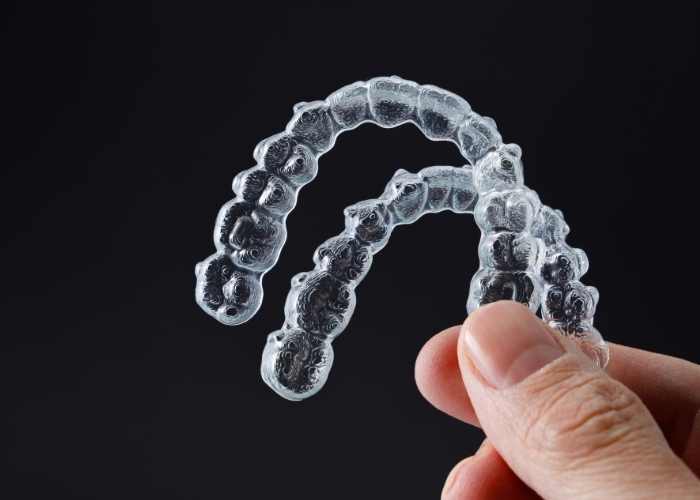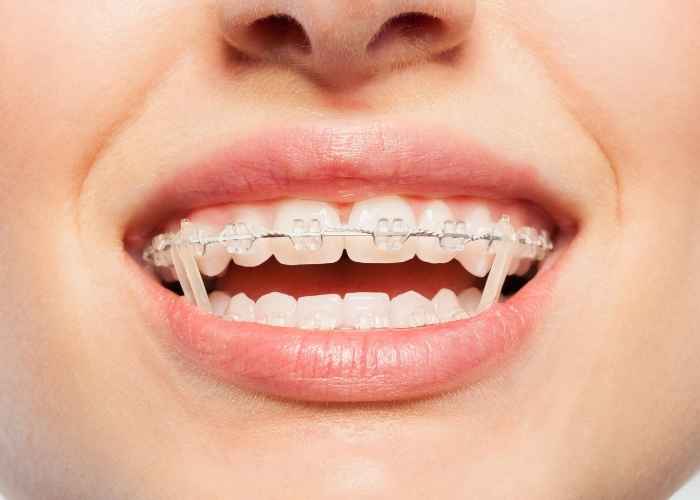

Orthodontic Treatment
WE ARE DENTISTRY CLINIC
What exactly does the orthodontic treatment entail?
The teeth can be aligned or repositioned with the use of orthodontic treatment. It is a common misconception that our teeth are fixed, unchangeable structures that are placed in the jawbone. This is not the case. It is possible for teeth to shift positions during the course of our lives in response to the stresses that are exerted on them; however, because this process moves very slowly, we frequently have the impression that our teeth are either permanently set in place or do not shift at all.
Teeth perform their functions differently depending on how they interact with one another, where they are positioned in the mouth, and how high they are. For instance, front teeth that are inclined forward in such a way that they cannot come into contact with each other when the mouth is closed are unable to perform the cutting function. This will result in an increase in the load that is placed on the teeth when they are performing the function of chewing, an increase in the force that is applied to the muscles that are responsible for chewing, a change in the structure and shape of the jawbone while it is still in the developmental stage, and as a consequence, the face and mouth will move and develop in an abnormal manner.
When patients who need orthodontic treatment do not get this therapy, they run the risk of developing major issues with their ability to breathe, eat, and communicate. As a result, orthodontic therapy is not merely a cosmetic treatment; rather, it is primarily a treatment that restores function and improves appearance.

Why should I get treatment for my orthodontic issues?
There are a lot of people who have misshapen or crooked teeth. These teeth have been realigned with the use of orthodontic therapy, which has made them look much better. The orthodontic treatment you receive can help enhance not only your appearance but also the way your mouth works.
Some people's upper front teeth are more forward than normal, giving them a crooked appearance. These teeth are moved into the proper position with the use of orthodontic therapy, which moves them back into their original position. Because the closure lines of the upper and lower jaws of some patients are different from each other, it is impossible to create a proper functional closure with those jaws. In this instance, orthodontic treatment improves functioning by shifting the position of the lower and upper jaws closer together. This allows for better closure of the mouth.
An excessive load is imposed on the jaw and jaw joint in patients whose jaw closure is not correct. This is due to the fact that the jaw muscles will be overstressed in these patients. This can lead to issues with the joints as well as headaches. These issues can also be resolved by undergoing orthodontic treatment.

When is the earliest age when orthodontic treatment can be initiated?
When abnormalities first start to become apparent in a child's smile, the ideal time to begin orthodontic treatment is during childhood. On the other hand, orthodontic treatment can also be performed on older patients. The practice of providing orthodontic care to adults is rapidly gaining popularity. To begin orthodontic treatment, it is vital to already possess an adequate number of teeth. This is the single most significant prerequisite.
Who is qualified to do orthodontic procedures?
Your dental practitioner is able to carry out your orthodontic therapy. There are several approaches of taking care of this. In more complicated situations, he might also suggest that you see an orthodontist. Attending all of your scheduled appointments is the single most crucial step in the orthodontic treatment process.
What exactly happens during the therapy phase of orthodontics?
Your teeth are capable of moving in a horizontal, vertical, or even back and forth direction with only a small amount of effort being supplied to them. In other words, it is feasible for there to be a shift in the position of the teeth across all three dimensions. Additionally, the angles formed by the teeth can be altered with the use of orthodontic therapy.
In order to exert these small forces on your teeth, we will employ holders that are known as brackets. The front of each tooth is typically where these brackets are affixed to the tooth. The movement of the tooth is then guaranteed by applying modest forces to these brackets in order to secure the movement. In individuals who are concerned about their appearance, brackets can be put to the back of the tooth rather than the front, and orthodontic treatment can be carried out in this manner.
Putting brackets in every instance is not always required. Now, it is possible to carry out orthodontic treatment using a transparent apparatus, which is referred to as transparent plaque. These plates present an excellent possibility for a solution, particularly for individuals who are concerned about their appearance.
Just prior to the beginning of the treatment, X-rays should be taken in order to gain a better understanding of the locations of the teeth and to plan accordingly.
Will it be necessary to remove my tooth in order to properly align the other teeth?
It is likely that it will not be possible to properly align all of the teeth that are located in your mouth. If this is the case, it is possible that some of your teeth will need to be removed in order to create room. Your dentist will make every effort to save you the discomfort and inconvenience of having teeth pulled by doing everything in his or her power to avoid the procedure. On the other hand, in order to begin treatment, it is possible that several of your teeth will need to be pulled.
What exactly constitutes the operational apparatus?
Orthodontic treatments have the potential to alter the growth of the jaw as well. The utilization of the functional apparatus allows for the modification of the growth of the jaw with the assistance of the jaw muscles.

What is the purpose of brackets?
Metal is the typical material used for fixed brackets. There is also the option of using brackets composed of ceramic or plastic, which are often reserved for usage on adult patients.
What is it that elastic band is?
The teeth are moved in the desired direction by the utilization of sensitive elastic bands. It is important to periodically replace these elastic bands in order to maintain proper alignment of the teeth.

What is a clear aligner?
The clear plate that you're using is constructed of a transparent, rigid plastic. These brackets have been specially manufactured, and due of their transparent nature, they are nearly undetectable. Plaques made of a transparent material are created to completely cover your teeth and should be worn for roughly 22 to 23 hours each day while you are awake. During the process of eating and drinking, the patient can simply remove the transparent plates, clean the area, and then replace them. From an aesthetic point of view, transparent plates are an exceptionally good solution.
How long will it take to complete the orthodontic treatment?
The length of orthodontic treatment is directly proportional to the severity of the underlying condition that needs to be addressed. In some challenging situations, the treatment may be completed in as little as a few months, but in others it may take as long as two years.
After the teeth have been moved into the appropriate place, what steps are taken next?
After the teeth have been moved into the proper position, they need to be kept there for a while before proceeding with the procedure. The time allotted for this procedure is known as the retention period. It is important for the bone and gingiva that surround the teeth to become accustomed to this position so that they can become stable, which is why the teeth are held in this position for a period of time.
How many total sessions are required to complete it?
The teeth are moved into new positions approximately once every four to six weeks as part of orthodontic therapy, until the desired outcome is achieved. The severity of the underlying issue will definitively determine how long the treatment will need to be administered. If the issue is really advanced, then further sessions will be necessary to address it.
Is the orthodontic treatment a procedure that causes pain?
The first few sessions of any orthodontic treatment could seem a little painful. However, once some time has passed, you will no longer experience this sensation, and you may even find that you forget the appliance is even present in your mouth. You may have some discomfort in the beginning, particularly after each appointment at which the teeth are moved; however, this discomfort will not last very long and will go away after some time has passed.
How much of a positive impact does it have when someone gets orthodontic treatment?
It is entirely contingent upon the patient, the physician, and the nature of the relationship that exists between the patient and the physician. It is imperative that you keep all of the visits that have been scheduled for you by your physician and that you adhere to to all of his recommendations. In the case of young patients in particular, the family bears a significant amount of responsibility.

Will my teeth become damaged if I get orthodontic treatment?
Because the appliance that is used to place the teeth during orthodontic treatment remains in your mouth for a significant portion of the treatment, there is an increased possibility that germs will create plaque on the teeth. Because of this, those who are currently getting orthodontic treatment should focus even more attention than usual on maintaining good oral hygiene. Because of the appliance that is placed in the mouth, it is possible that the teeth will not be adequately brushed while brushing, and that not all of the surfaces of the teeth will be adequately reached. In order to guarantee that the teeth are cleaned thoroughly, you will need to make use of specialized brushes known as dental floss and interdental brushes. In addition, using a mouthwash on a regular basis is essential in order to remove residues left behind by eating.
After completion of orthodontic treatment, will the results be irreversible in every way?
Even after the retention treatment has been given, there is still a possibility that the teeth will undergo minute shifts over the course of time. Because of this, it is possible for there to be alterations in the teeth even after the treatment has been completed. On the other hand, if these alterations are not particularly significant, retreatment is typically not required.









